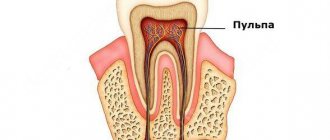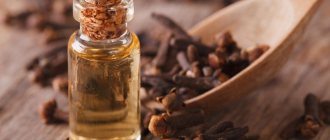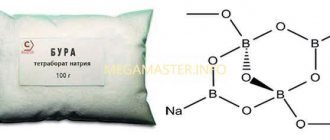In this article
- Why is it better to use balms for an irrigator?
- What should be the liquid for an irrigator?
- Which irrigator liquid is better?
- Is it possible to make irrigator liquid yourself?
- Conclusion
The irrigator allows you to maintain the health of your teeth and gums, protecting them from dental diseases. If you use it in conjunction with special solutions, you can achieve the maximum effect: reducing gum bleeding, eliminating inflammation and destroying bacteria. Let's try to figure out which irrigator liquid is better.
Modern medicine is aimed not only at treatment, but also at the prevention of pathologies. In order to prevent diseases of teeth and gums, an irrigator has been developed - an electrical device that is used for additional cleaning of the oral cavity. The pulsating stream of water created by the device washes away germs and food debris, cleaning even hard-to-reach places: behind the “eights”, between the teeth and behind orthodontic structures (braces, crowns and dentures).
According to dentists, if you use an irrigator every day after traditional brushing, the risk of developing caries is reduced, blood circulation in the gums is improved, enamel is strengthened, tissues are restored, etc. You can enhance the effect of using an irrigator by using special liquids instead of water: balms, rinses, etc. solutions.
Principle of operation
An irrigator is a device for caring for the oral cavity. During its operation, liquid under pressure enters the reservoir. And then the nozzle sets it in the desired direction - to those areas of the oral cavity that we cannot treat with a brush or dental floss. The liquid pulsates, thereby cleaning the teeth, including the spaces between them, the tongue, and the gums. If you use the irrigator for dental care correctly, your hygiene will be of the highest quality.
Experts also approve of the irrigator as a care device for dentures and orthodontic structures.
How to choose the cleaning mode and water pressure
When cleaning your mouth with an irrigator, you should not forget about the correct operating mode. First of all, this is the pressure of the water jet, which is adjusted with a special button or control knob. Even the simplest and cheapest models can work in two versions - strong and weak.
During the initial period of use, the gums may not react correctly to external influences. Therefore, at this stage, the minimum gentle regimen should be used. Gradually, the mucous membrane and the entire cavity will get used to this pressure, and after 1-2 weeks it will completely adapt to it. If there is no discomfort, you can gradually increase the power of the supplied jet.
Strong pressure does not always provide the desired result. If you have hypersensitivity or diseases of the mucous membrane, you should not use the maximum mode to avoid serious injury to the gums. If it is not possible to consult a dentist on this matter, it is recommended to rely on your own feelings.
When to use an irrigator?
One of the most popular questions: how often can you use a waterpik? The answer is simple - every time after brushing your teeth.
But if you are a person who wears braces or has bridge structures, then you should use the irrigator more often - every time after eating. Because food gets stuck and remains in the mouth.
Another important rule is that you need to use the device constantly. And then it will really be the prevention of gum disease and effective hygiene of the entire cavity, which a toothbrush alone cannot provide.
Device Application
A brush is an indispensable tool for care, but the dentition is heterogeneous; there are crevices and places in it that are difficult to clean completely. If hygiene is poor, these areas will harbor harmful bacteria that feed on carbohydrates derived from leftover food, forming a biofilm, and accumulating plaque that can lead to stone formation. The device was created in the 1960s and has become a real godsend, especially for people prone to dental diseases: when used correctly, the irrigator removes up to 90% of the organic substances responsible for their occurrence from the enamel surface.
The use of this device is recommended for all people who care about their dental health, but it is most relevant for those who wear removable or fixed orthodontic appliances. Braces, bridges, plates, retainers, veneers cannot be properly cleaned with a brush alone, but a directed jet of liquid under pressure copes with this task perfectly and reaches even hard-to-reach places, washing out harmful organic matter from them and destroying the deposits that form.
What to put in the irrigator?
What to put in the irrigator?
You can fill the irrigator with:
- The clean water we drink;
- Saline solution;
- Balms.
In this case, we use water at room temperature. If you use a irrigator with hot water, the device will quickly break down. And too cold water damages tooth enamel.
We do not recommend using a dental irrigator with herbal decoctions, as deposits form in the device and caring for it becomes difficult. You will have to clean the sediment often.
Dentists advise pouring balms, which have a number of advantages:
- Fight bacteria;
- Helps cope with inflammatory processes;
- Makes your breath fresh;
- Does not leave microparticles;
- Does not form foam or sediment.
Is it allowed to leave liquid in the container after the procedure?
If the solution in the reservoir is not completely used up, it is usually tempting to leave it for next time so as not to waste time pouring a new one. You shouldn't do this. The fact is that it forms an excellent breeding ground for bacteria, including pathogenic ones, which, under suitable conditions, will begin to multiply rapidly, making subsequent manipulations with the use of waste filler harmful to the body.
After use, the tube must be rid of any remaining water by allowing it to run empty for a few seconds after drying. This is especially important for portable devices in cold weather conditions (for example, while traveling): when freezing, the liquid expands and can damage the fragile tube.
Which attachments will be useful for you?
Irrigator attachments
- Standard. Suitable for those who do not have any special diseases or installed structures in the mouth. These are nozzles without bristles. They look like bent tubes at an angle, they wash food well and cope with plaque. Typically, manufacturers offer 2 standard attachments in a set;
- Orthodontic. The same bent tubes at an angle, but with bristles. The best option for braces and other similar systems. The liquid paired with bristles cleans the interdental spaces well, removes plaque, and also takes care of braces;
- Periodontal. Needed for periodontal pockets. Thanks to the soft tip, when you use the irrigator to clean your teeth, it does not injure your hypersensitive gums. But such a nozzle cannot be maintained with high pressure, so that the tip does not fly off. The pressure in the nozzle itself is already calculated and high pressure is not needed here;
- Brush attachments for plaque. Accordingly, they help remove plaque on various structures. At the same time, the nozzle is not a replacement for a brush;
- Tongue attachments. They have the shape of a spoon, which allows you to effectively remove plaque from the tongue, cheeks, and palate;
- Brush attachments. That is, it is a toothbrush along with water under pressure. Cleans teeth and other structures well. You can use it every day, but do not replace a regular brush with this attachment;
- Nasal attachments. For cleaning the nasal cavity.
Watch the video from experts on how to choose nozzles for your irrigator.
Types of rinsing solutions
Let's look at the classification of the funds presented today.
Type
There are preventive (hygienic) and therapeutic.
Preventive ones freshen breath, eliminate food debris, prevent the occurrence of dental problems and relieve inflammatory symptoms, strengthen gums and enamel, protect them from bacterial attack, but they are not able to cope with existing serious dental diseases.
Important! Under the guise of “preventive”, today you can find products that only perform the function of freshening breath. That's all. They differ little from each other in composition, and bad breath is often simply masked rather than eliminated the cause of its occurrence. They are of poor quality, contain toxic ethanol, can stain enamel, harm gums, and do not protect the oral cavity from bacteria at all. To avoid disappointment, be sure to consult with your dentist before making a choice.
Therapeutic drugs help in the fight against serious pathologies, but they should be used only as prescribed by the attending physician and at a strictly prescribed time (in courses). Remember that uncontrolled use without assessing and taking into account the real situation in the oral cavity is not a joke.
There are many types of rinses
By purpose
All available types from the great variety of rinses can be divided into 6 types, each of which must be selected in accordance with the problems that you have.
Protection against caries
Products from this series reduce the volume of plaque and thereby protect against caries, reduce the level of acidity in the mouth and strengthen the enamel. They contain calcium, potassium, fluorine ions, amino fluoride or sodium fluoride, plant components, xylitol. Among them are: Elmex “Protection against caries”, PresiDENT Classic Plus, Donfeel and 4-action Mouthwash from Biorepair, Listerine EXPERT “Protection against caries”.
Eliminating bleeding
Irrigating fluids used to irrigate the oral cavity may have an anti-inflammatory effect. As a rule, such balms are recommended for use in cases of gum disease, as well as damage to the oral mucosa.
The solutions contain extracts of medicinal plants: sage, oak bark, chamomile, calendula or St. John's wort, which not only eliminate bleeding gums, but also have an antiseptic and deodorizing effect. Triclosan or chlorhexidine are added to special medicinal elixirs - substances that have a powerful antibacterial effect.
Gum protection
They relieve inflammation and saturate the gum tissue with nutrients, allowing the first manifestations of gingivitis to stop. Among the active compounds they contain chlorhexidine, methyl salicylate, triclosan, benzydamine.
This group includes: Parodontax Extra, PresiDENT “Profi”, CURASEPT ADS with chlorhexidine and hyaluronic acid1, Paroguard from Miradent, Twin Lotus, Splat “Active”. You can use Listerine EXPERT “Gum Protection”, because, as the manufacturer assures, it reduces the inflammatory process by 94%2 and reduces plaque formation by 70%.
The photo shows rinses to protect gums
On a note! Products containing triclosan and chlorheskidine should not be used for more than three weeks in a row, because They, along with a positive effect, can disrupt the composition of the microflora of the oral cavity, cause dry mucous membranes, make the enamel dark and even contribute to the appearance of bad breath.
Enamel whitening
Helps dissolve plaque and reduce the number of bacteria in the oral cavity. Contains active oxygen and hydroxyapatite. For example, GLOBAL WHITE and Blanx White Shock, INNOVA, Listerine EXPERT “Expert Whitening”.
However, you should not expect that they will whiten your teeth by more than 0.5-1 tone; for more dramatic changes, contact a professional dentist.
Daily care and prevention
Permanent comprehensive protection of teeth and gums. Such products can be used every day on an ongoing basis. For example, the “Forest Balm” series, Colgate Plax “Refreshing Mint” (“Colgate”), Listerine “Strong Teeth, Healthy Gums”, “Green Tea”, “Fresh Mint” or TOTAL CARE, SPLAT “Healing Herbs”.
This is interesting: Why does the gum near the tooth hurt and what to do, how to treat it
To protect sensitive enamel
This classification or type of rinse aid usually includes fluoride and potassium, aluminum. The components reduce irritation from external factors and restore the surface of the teeth. An example would be: Elmex Sensitive+, Lacalut Sensitive, ROCS “Active Calcium”, Colgate Plax “Freshness of Tea”.
Can I give a waterpik to a child?
Irrigator for children
Yes, children can also use an irrigator. But this needs to be done when there is a parent nearby and with minimal pressure. It is also important that the child has his own brush head, just like a toothbrush.
Before using an oral irrigator, watch our video with your child. This way, the baby will not be afraid of the device and will understand its benefits and operation together with you.
The best rinses for complex therapy of periodontal diseases
Lacalut active
Lacalut active mouth rinse is produced in Germany. It contains sodium fluoride (225 ppm), 0.25% chlorhexidine digluconate, aluminum lactate and does not include ethyl alcohol. An antiseptic (chlorhexidine) fights the development of the infectious process, aluminum lactate has an astringent effect, which eliminates bleeding gums, and sodium fluoride protects teeth from caries. Lakalut asset cannot be used for more than 21 days. Main advantages:
- effective,
- has a good smell and taste.
Minuses:
- To achieve the expected result, you need to take several courses.
Asepta
A Russian rinse that contains two antiseptics (chlorhexidine bigluconate - 0.05%, benzydamine - 0.15%), xylitol. It has a pronounced antibacterial effect and a slight analgesic effect. The drug can be used in the treatment of ulcerative-necrotic and hypertrophic forms of gingivitis (inflammation of the gums). The maximum permissible period of use is 14 days. With prolonged use, it can cause the development of dysbiosis of the oral cavity. Main advantages:
- mint, not very pronounced taste,
- does not contain artificial colors or alcohol,
- pronounced positive effect.
Minuses:
- quickly consumed.
How to clean braces with an irrigator?
An irrigator complete with special attachments is the best device for caring for the orthodontic system. While wearing braces, it is correct to use the irrigator for cleaning as follows:
- Start brushing with the last teeth in the row;
- Take care of each brace separately, and clean the clasps and other parts of the system that are close to the teeth especially carefully;
- Finish the procedure with care between the teeth and gums.
And at the end, rinse your mouth with a balm-rinse or an antiseptic solution, since while wearing the systems, your lips and cheeks are usually inflamed.
Watch the video on how to clean braces with an irrigator and more. Do it correctly and regularly!
The best anti-caries mouth rinses
President Classic Plus
The rinse contains sodium fluoride (250 ppm), xylitol and plant components (extracts of lemon balm, sage and chamomile). Protects tooth enamel from damage by caries and has a pronounced refreshing effect. It does not contain antiseptics or alcohol, so it is approved for use in children over 6 years of age and people whose profession involves driving vehicles.
Main advantages:
- pleasant aroma,
- soft taste,
- long lasting breath freshening.
Best lists
Let's determine the most effective mouth rinses by category:
- budget;
- anti-caries;
- for children.
Budget
Fluorodent is the most budget-friendly mouthwash option on our market. Its price ranges from 40 to 110 rubles. But still, this product has an antibacterial effect, strengthens enamel, whitens, and freshens breath. The structure of the rinse is based on a mixture of essential oils: lemon, mint, anise, clary sage.
mouth rinse Fluorodent.
Anticarious
Elmex “Protection against caries” copes well with its main task, but also has an antibacterial effect and strengthens the enamel. The cost of the product is generally 600 rubles.
Elmex mouth rinse Protection against caries.
For children
Drakosha is an excellent representative of a baby mouthwash. You can purchase it for up to 100 rubles. It is absolutely safe for your children, but it is better to make sure that the child does not swallow this liquid.
Drakosha mouth rinse.
The best plant-based mouth rinses
Forest balm
Mouthwash from the Forest Balm brand is intended for comprehensive maintenance of the oral cavity in a healthy condition. It will not solve serious problems, it is intended mainly for prevention. The product protects against caries and strengthens enamel due to a mineral complex with fluoride. The Russian concern Kalina produces Forest Balsam rinse in 13 versions, not all of them have a purely herbal composition. Some may contain fragrance, an organic solvent, or the antiseptic triclosan. When purchasing, you should pay attention to the components included in the product. Main advantages:
- pronounced effect,
- pleasant taste,
- affordable price.
Minuses:
- the composition is not 100% natural.
MEXIDOL dent Professional
Rinse aid made in Russia. The composition includes: anti-inflammatory component methylhydroxyperidine succinate (or Mexidol), licorice root extract, amino acid complex. Suitable for periodic use, prescribed to prevent the development of inflammatory processes for people prone to developing stomatitis and those who wear removable dentures. Main advantages:
- moisturizes the mucous membrane,
- heals wounds with stomatitis well.
Minuses:
- Recommended only for certain diseases.
Varieties
Today there are a large number of irrigators, differing from each other in various parameters. Devices are divided into portable and stationary, powerful and not very powerful, with one or more nozzles and modes, with and without microbubble technology, with a water tank and with a connection to a tap, as well as with built-in dental floss, like JETPIK irrigators, in several times increasing the effectiveness of teeth cleaning. Do not also forget that each device has a certain warranty period, depending on the policy of the manufacturer. Read about how to choose the best irrigator in our other articles.
Reliable and convenient irrigator for the whole family Hydro Floss Kitty Waterjet
The best mouth rinses for hyperesthesia (increased sensitivity) of teeth
Lacalut sensitive
The German LACALUT sensitive mouth rinse is a prime example of excellent quality at a reasonable price. Reduces the sensitivity of enamel to hot and cold, sweet and sour. Protects sensitive teeth from caries, strengthens gums. In addition to amino fluoride, the drug contains aluminum lactate with a pronounced astringent effect and an antiseptic, which requires use for no more than 21 days. Main advantages:
- Reduces tooth sensitivity well
- refreshes the oral cavity,
- helps cope with bleeding gums.
Minuses:
- The bottle lasts for a short time.
Since many rinses contain antiseptics or alcohol, it is not recommended to choose them yourself. In order for the effect of the rinse to be maximum, you need to contact a dentist to determine the problems of the oral cavity and carry out complete sanitation (treatment of all dental diseases) and professional hygiene.











